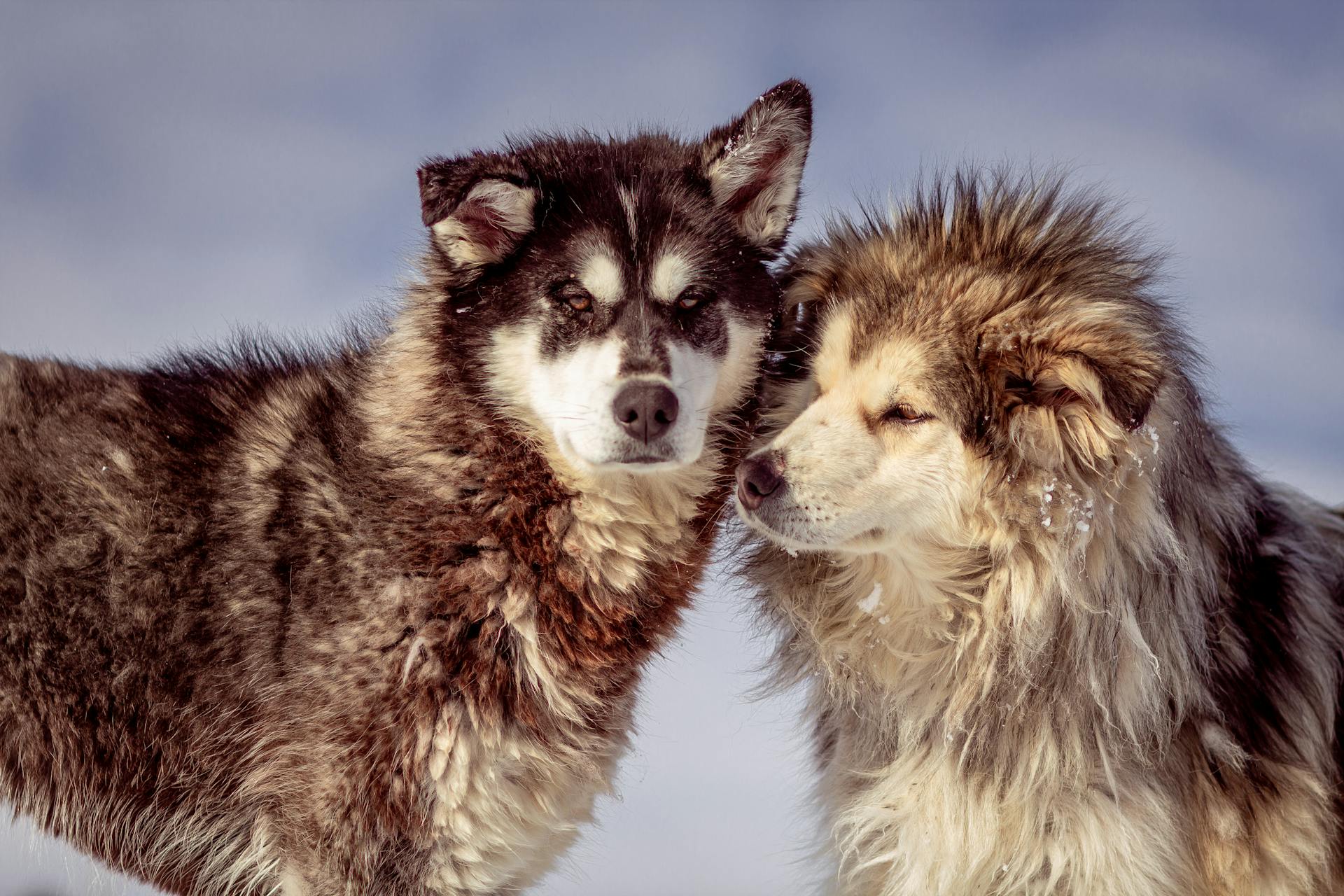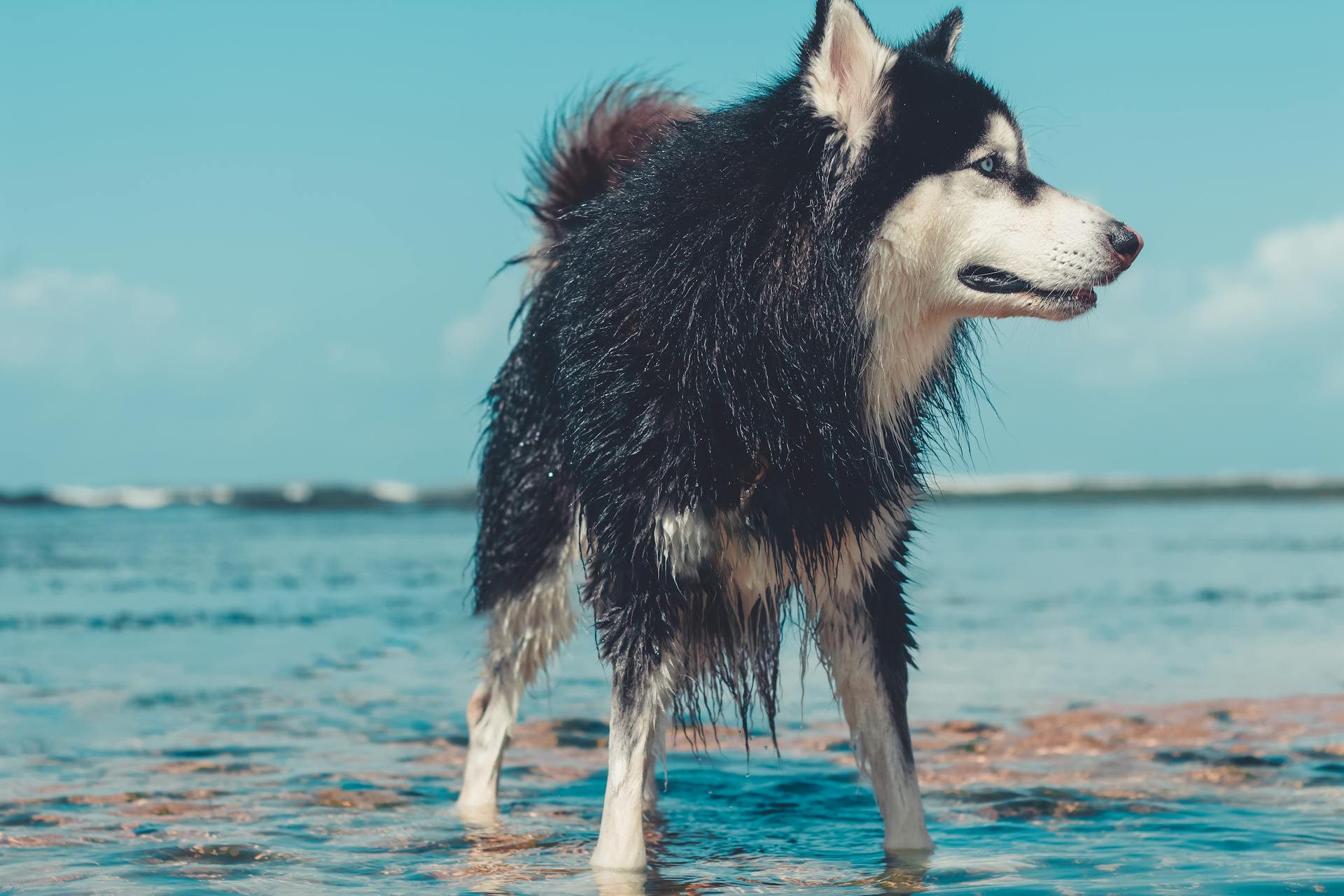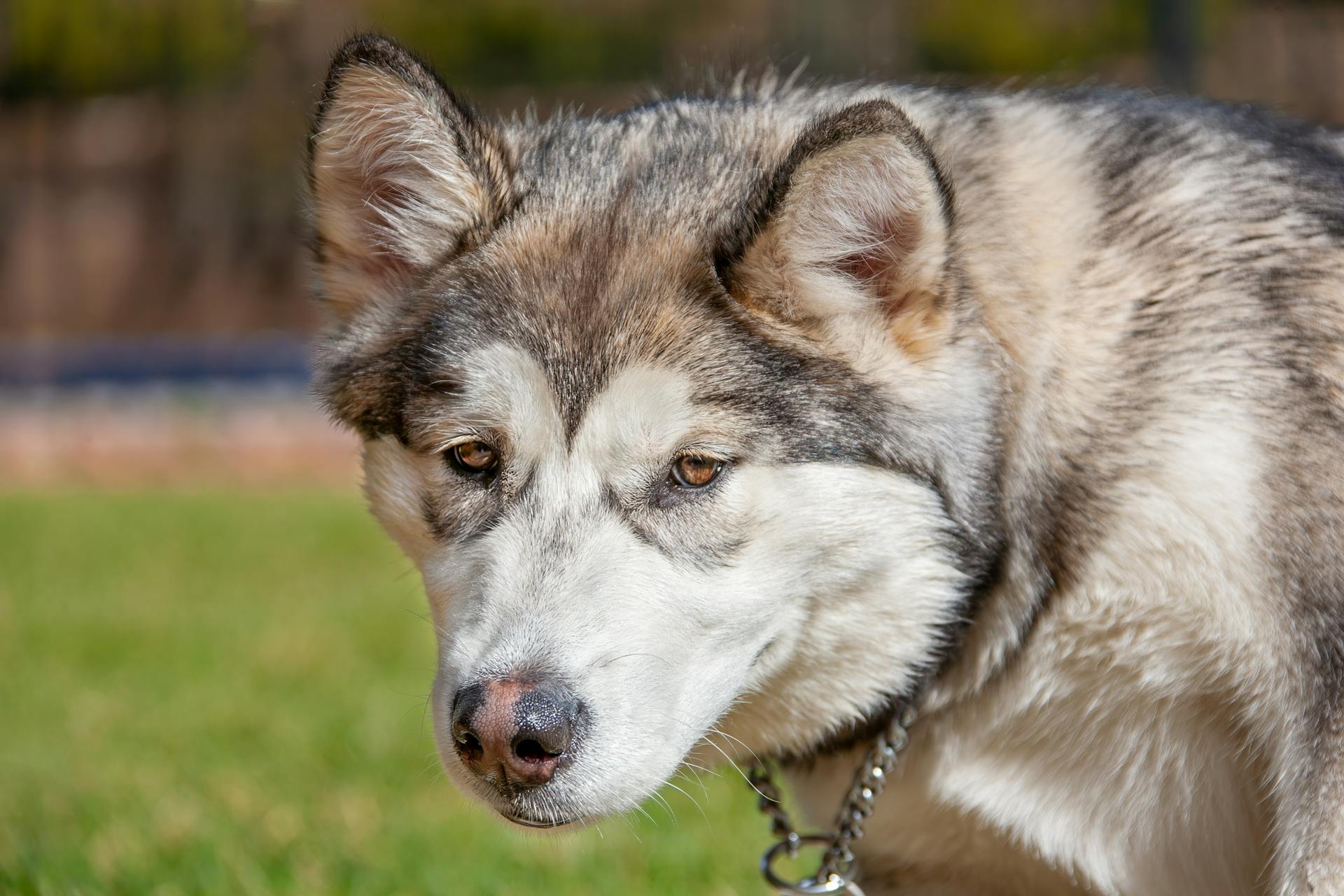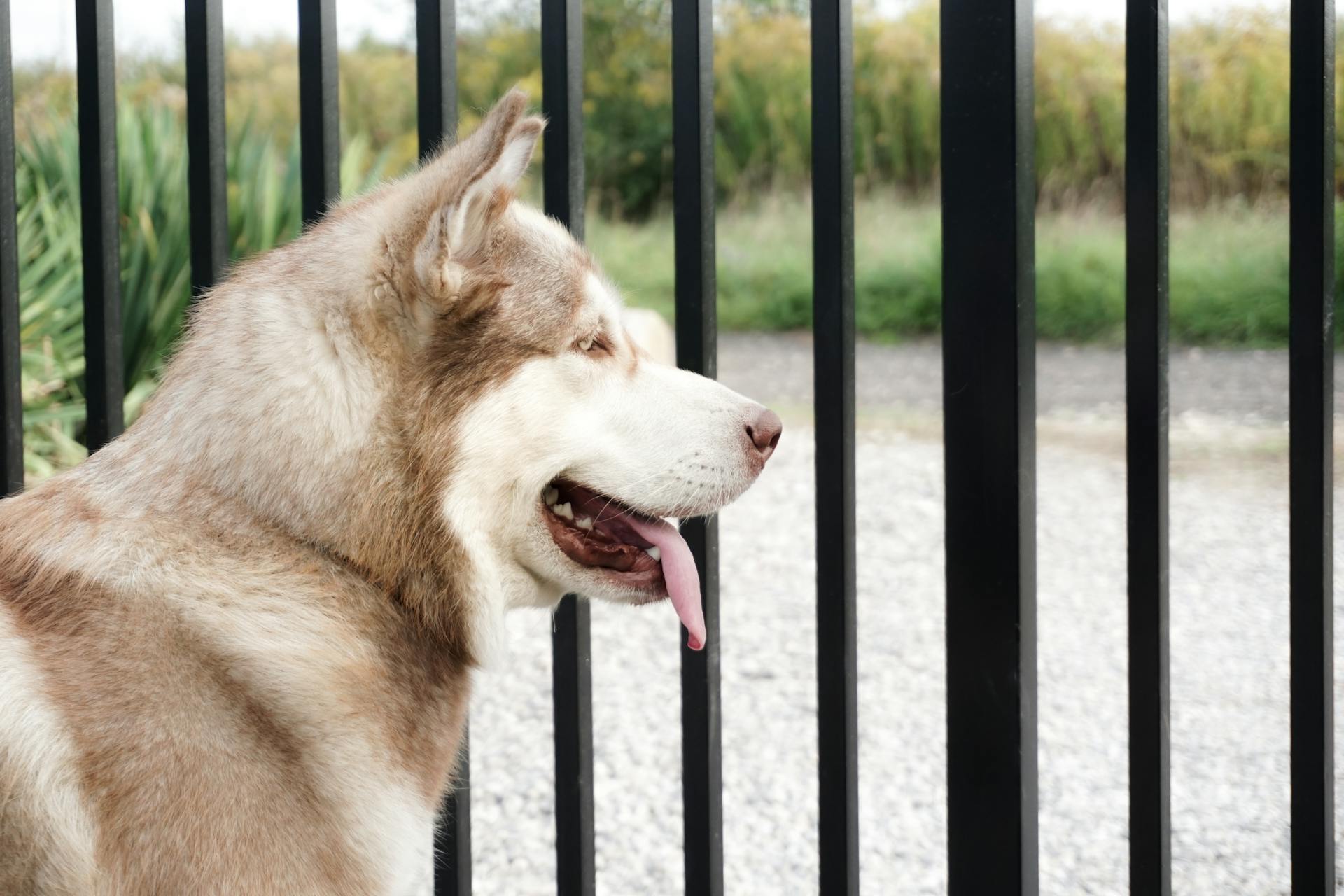
Malamutes are a high-energy breed that requires regular exercise to stay happy and healthy.
They need at least 1-2 hours of physical activity per day, which can include running, hiking, or playing fetch. This is because they have a strong prey drive and were originally bred to pull sleds in the Arctic.
Physical Characteristics
You can easily recognize an Alaskan Malamute by its wolf-like appearance and signature face mask (except when the dog is entirely white).
These powerful dogs have deep chests and broad shoulders, making them quite muscular. Their large heads and triangular ears add to their distinctive physical traits.
Male Alaskan Malamutes typically reach a height of 25 inches at the shoulder and weigh around 85 pounds, while females are generally around 23 inches tall and weigh approximately 75 pounds.
Size
Alaskan Malamutes are a sturdy breed, and their size is one of their most distinctive features.
Male Alaskan Malamutes typically reach a height of 25 inches at the shoulder. Females are generally around 23 inches tall. Both males and females can weigh quite a bit, with males weighing around 85 pounds and females approximately 75 pounds. However, some well-built adults can exceed 100 pounds, making them appear even more robust.
Curious to learn more? Check out: Are Alaskan Malamutes Good Guard Dogs
Coat and Coloring
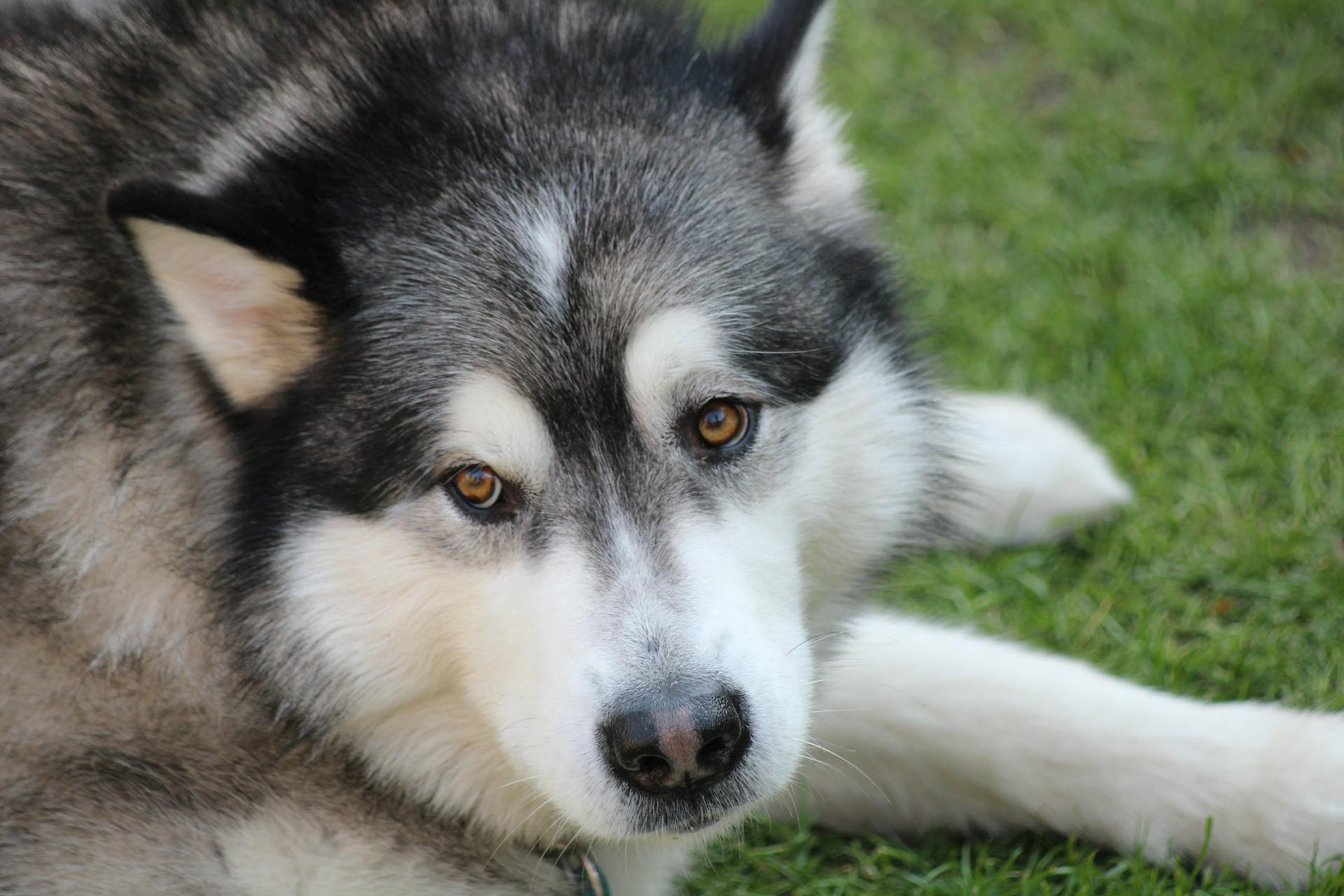
Alaskan Malamutes have some amazing coat features that set them apart from other breeds.
Their thick double coat is a key characteristic, with a coarse outer layer and a soft undercoat. This unique combination makes their coats perfect for withstanding harsh Alaskan weather conditions.
Here are the different colors you can find in an Alaskan Malamute's coat:
- Black and white
- Blue-gray and white
- Gray and white
- Red and white
- Sable and white
- Silver and white
- Agouti and white
- Pure white
The thickness of their coat varies, with some coats being longer than others. This means that every Alaskan Malamute is unique in terms of its coat texture and length.
Characteristics of the Malamute
The Alaskan Malamute is a stunning breed with some truly unique physical characteristics.
Their ears are a dead giveaway - medium-sized and triangular with slightly round tips that point forward. This distinctive feature makes them easily recognizable as Malamutes.
You can't help but notice their expressive eyes, which are almond-shaped and brown in color. They always seem to have a curious and friendly look in them, making you want to get to know these dogs better.
A black nose is typical for Alaskan Malamutes, except for those with red-and-white coats, who have brown noses instead. It's a small detail, but one that adds to their overall charm.
Their double coat is another impressive feature - coarse and thick on top, with an oily and wooly undercoat underneath. The fur gets shorter on the sides and longer on the back, shoulders, and legs, giving them a rugged yet elegant look.
Malamutes come in a variety of colors, including all-white, gray, silver, black, sable, seal, blue, agouti, and red. Their coat color is always a combination of white with one or more of these other hues.
One final distinguishing feature is their plume-like tail, which curls around their back when they're not working. It's the perfect finishing touch to an already impressive canine physique.
You might enjoy: Alaskan Malamute Shedding
Personality and Temperament
Alaskan Malamutes are known for their playful and friendly nature, often viewing everyone as friends - which can make them less suitable as watchdogs.
Their loyalty to family and friends is unwavering, as they thrive on being an integral part of their human pack. They're great with kids and babies, but do need to be supervised around small children due to their size and strong bite force.
Malamutes are not overly prone to barking, but they're known for their distinctive "woo woo" howl. Early socialization is crucial in developing their well-rounded social skills, which should start early and include exposure to diverse people, environments, and experiences during their formative years.
They have strong predatory instincts and may consider smaller animals as prey, so it's essential to establish other pets as part of the family through proper training and socialization. With that said, they can thrive with other dogs in the home if introduced properly.
These athletic dogs are always up for outdoor playtime, especially if you give them a job - whether it's pulling a sled or going hiking with a backpack on your Mal. They're also capable of finding new ways to dig under the fence or chew up the furniture unless you keep them challenged through games and training.
Their outgoing and affectionate nature makes them great companions, but they can be strong-willed at times - so it's best to train your pup from the get-go.
A different take: Are Alaskan Malamutes Good Family Dogs
Health and Care
Alaskan Malamutes are generally healthy dogs, but they can be prone to certain health conditions, such as cataracts, chondrodysplasia, hip dysplasia, hypothyroidism, hemeralopia, and polyneuropathy.
Regular exercise is essential for Alaskan Malamutes, with daily vigorous activity needed to prevent boredom and destructive behavior. Long walks, hikes, and activities like dog sledding or weight pulling can help them expend their energy.
A securely fenced yard is important to prevent your Malamute from wandering, as they may have a strong prey drive. Regular grooming is also crucial to maintain their coat health and minimize shedding, with brushing at least a few times a week recommended during heavy shedding seasons.
Common Health Conditions in Alaskan Malamutes
- Cataracts: Clouding of the lens of the eye that can cause blindness
- Chondrodysplasia: Genetic disorder causing dwarfism in dogs
- Hip dysplasia: Heritable condition affecting the thighbone and hip joint
- Hypothyroidism: Condition where the thyroid gland doesn't produce enough thyroid hormone
- Hemeralopia (day blindness): Sensitivity to light, making it difficult to see in bright sunlight
- Polyneuropathy: Genetic disorder affecting the nervous system
Health
The Alaskan Malamute is generally a healthy breed, but like all breeds, they can be prone to certain health issues. Cataracts are a common problem in Malamutes, causing blindness due to a clouding of the lens in the eye.
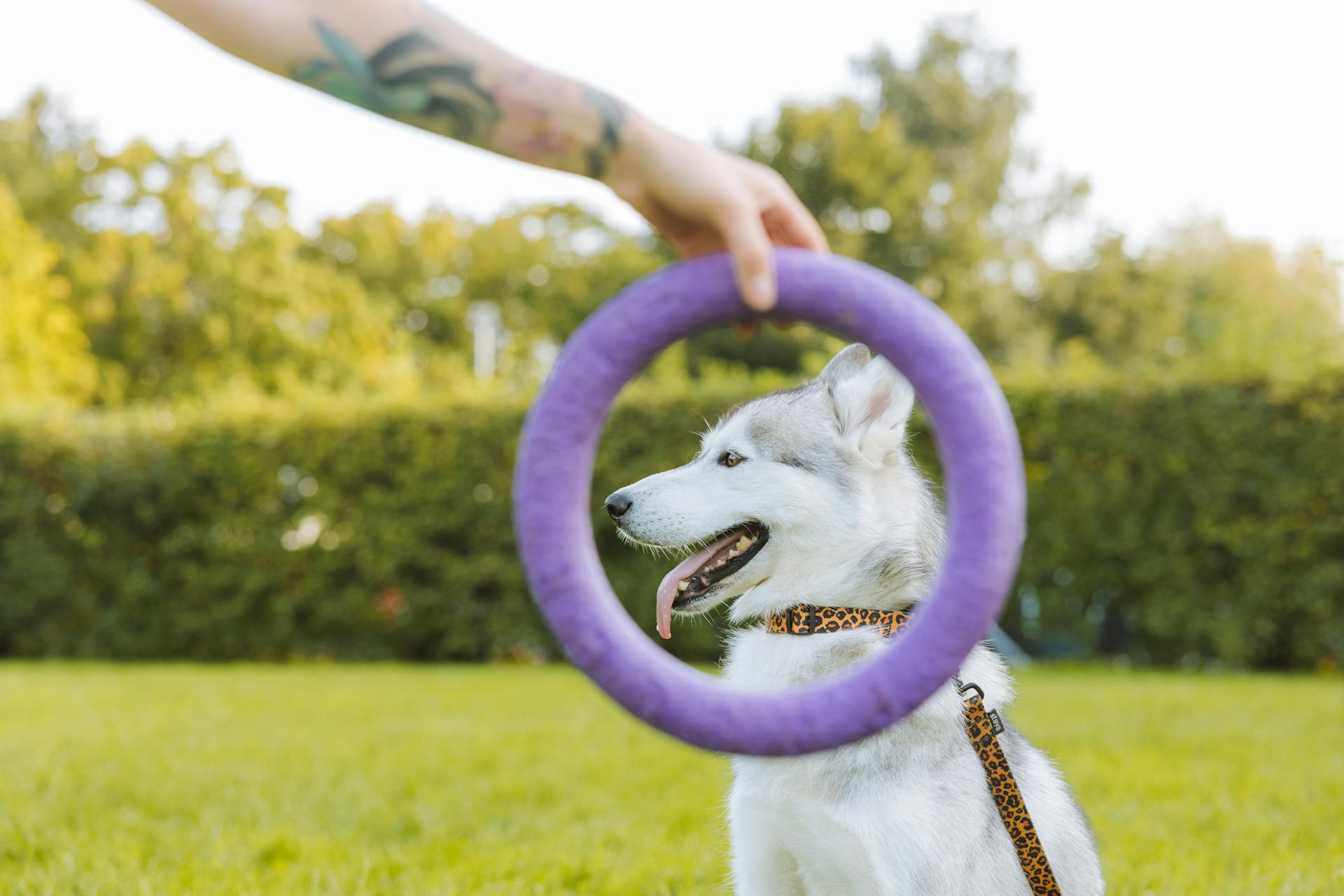
Regular veterinary check-ups can help detect these conditions early on, allowing for prompt treatment and reducing the risk of complications. Hip dysplasia is another issue that affects some Malamutes, leading to pain, lameness, and arthritis.
Hypothyroidism, or underactive thyroid, can also occur in Malamutes, causing a dry coat, weight gain, and hair loss. This condition can be managed with medication, but it's essential to catch it early on.
Some common health problems in Alaskan Malamutes include:
- Cancer
- Elbow and Hip Dysplasia
- Polyneuropathy
- Hypothyroidism
- Day Blindness
- Von Willebrand Disease
- Gastric Dilatation-Volvulus (GDV or Bloat)
Reputable breeders should provide clear test results for the parents of each litter, and it's recommended to test your Malamute for hips, eyes, and polyneuropathy DNA.
Care
Alaskan Malamutes are incredibly active and energetic dogs that require daily, vigorous exercise to stay happy and healthy.
They have a strong work ethic and need ample physical activity to prevent boredom and destructive behavior. Long walks, hikes, and activities like dog sledding or weight pulling can help them expend their energy.
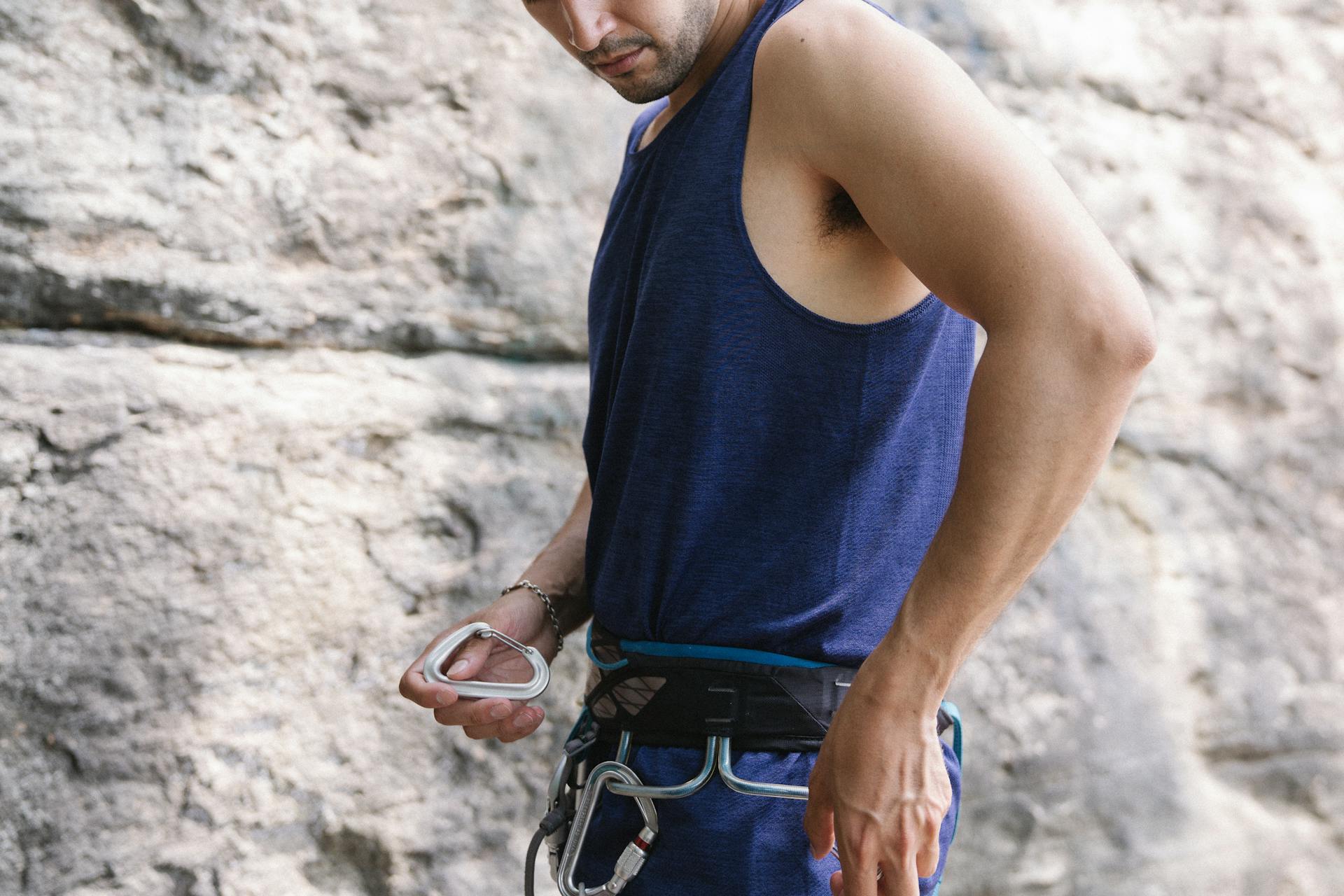
Providing mental stimulation through puzzle toys and obedience training is also crucial to keep their minds engaged. A securely fenced yard is important to prevent them from wandering, as they may have a strong prey drive.
Malamutes have a thick double coat designed to protect them from cold temperatures, but this also means they can quickly overheat in hot temperatures. Never shave your Alaskan Malamute during the summer months.
Regular grooming is essential for their overall well-being. Brushing them at least a few times a week, and more frequently during heavy shedding seasons, can help reduce loose fur and prevent matting. They shed heavily, especially during seasonal changes, which can last for several weeks.
Here are some key aspects of Alaskan Malamute care:
- Provide daily exercise (mental and physical)
- Engage in regular grooming (daily brushing during shedding seasons)
- Give them a job to do or they get bored
- Train with these strong-willed dogs
Considering their size and strength, it's essential that you provide clear, firm leadership for an Alaskan Malamute. This breed also requires considerable grooming and physical activity to live a happy and healthy life.
Routine nail trimming, ear cleaning, and dental care are vital for their overall well-being. Keep an eye out for signs of ear infections and maintain oral hygiene to prevent dental issues.
Nutrition

Alaskan Malamutes require a high-quality dog food that is age-appropriate.
This means looking for foods designed for large, high-energy breeds like yours. Their dietary needs evolve as they transition from puppyhood to adulthood and eventually reach their senior years.
Monitoring how much your Alaskan Malamute eats is crucial, especially if they're engaged in endurance activities like sledding or skijoring. You'll want to reduce portions or restrict calories if your pup gains excess weight.
Feeding several smaller meals per day rather than one to two larger portions can help prevent overeating and Bloat. This is a common issue with Alaskan Malamutes, so it's essential to be mindful of their eating habits.
Consulting a veterinarian or professional nutritionist will help you plan a consistent diet and portion schedule based on your Malamute's age, weight, and activity level. This is an important step in helping your dog avoid excessive weight gain or canine obesity.
For your interest: Malamute Dog Facts
Training and Exercise
Alaskan Malamutes are smart and surprisingly easy to train, but they also get distracted easily and have a reputation for being stubborn.
Consistent, rigorous training is essential for raising a respectful, obedient dog, as these dogs can be willful and require positive, reward-based training to respond well. A tired Mal is a content Mal, so regular exercise and mental stimulation are crucial to minimize their digging instincts through training and exercise.
These athletic dogs make excellent running partners and perfect companions for backpacking trips, competitive sledding, and skijoring, making them great candidates for activities like agility, obedience trials, and weight-pulling competitions.
A different take: Alaskan Malamute Training
Exercise
Alaskan Malamutes are built for physical activity and require a lot of exercise.
To satisfy their needs, you should plan for long walks and off-leash play at fenced-in dog parks. Without enough opportunities to burn off energy, they can become bored and destructive.
These athletic dogs make excellent running partners and perfect companions for backpacking trips, competitive sledding, and skijoring. They'll love pulling you places on a small sled in the winter or a kick bike on dry terrain.
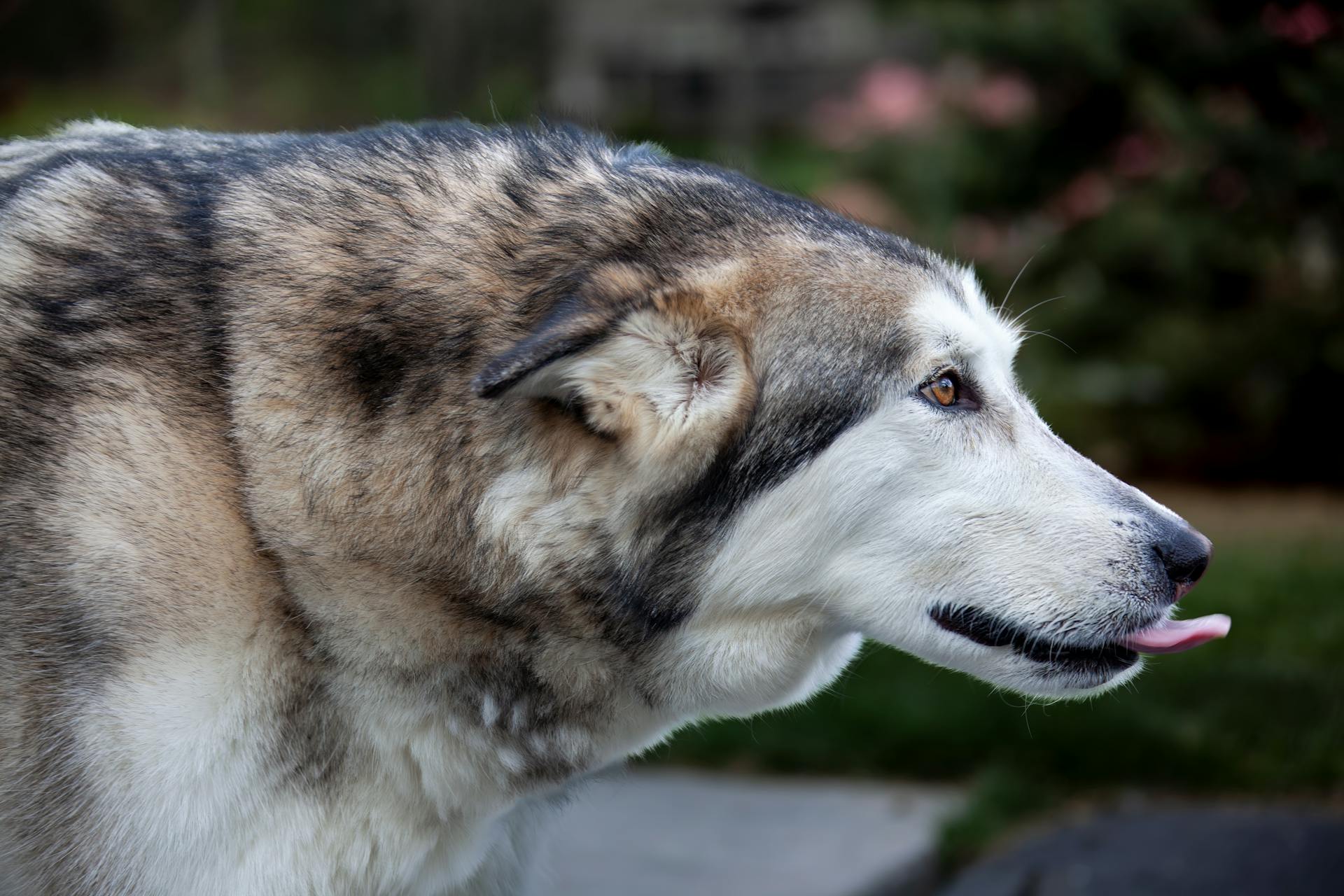
A couple of hours of exercise every day is pretty standard for Alaskan Malamutes. This can include brisk walks, slower ones to explore with their nose, and playtime in the backyard to ensure they're tired out.
Malamutes thrive in colder temperatures, so if you live in warmer weather, keep your outdoor activity to the cooler parts of the day. They'll also love pulling a regular bike or engaging in dog sports like agility and weight pulling.
To satisfy their exercise needs, a large yard with room to expend energy can help, but it's not enough on its own. Structured exercise is key for these strong, hardworking dogs.
Training
Alaskan Malamutes are intelligent dogs that respond well to positive, reward-based training.
Consistent and rigorous training is essential for raising a respectful and obedient dog, as these dogs can be stubborn and willful at times. They must understand their place in the family hierarchy, especially since they're pack animals. Without adequate socialization and training, Malamutes may become dominant with other pets and kids, posing a risk due to their size and strength.
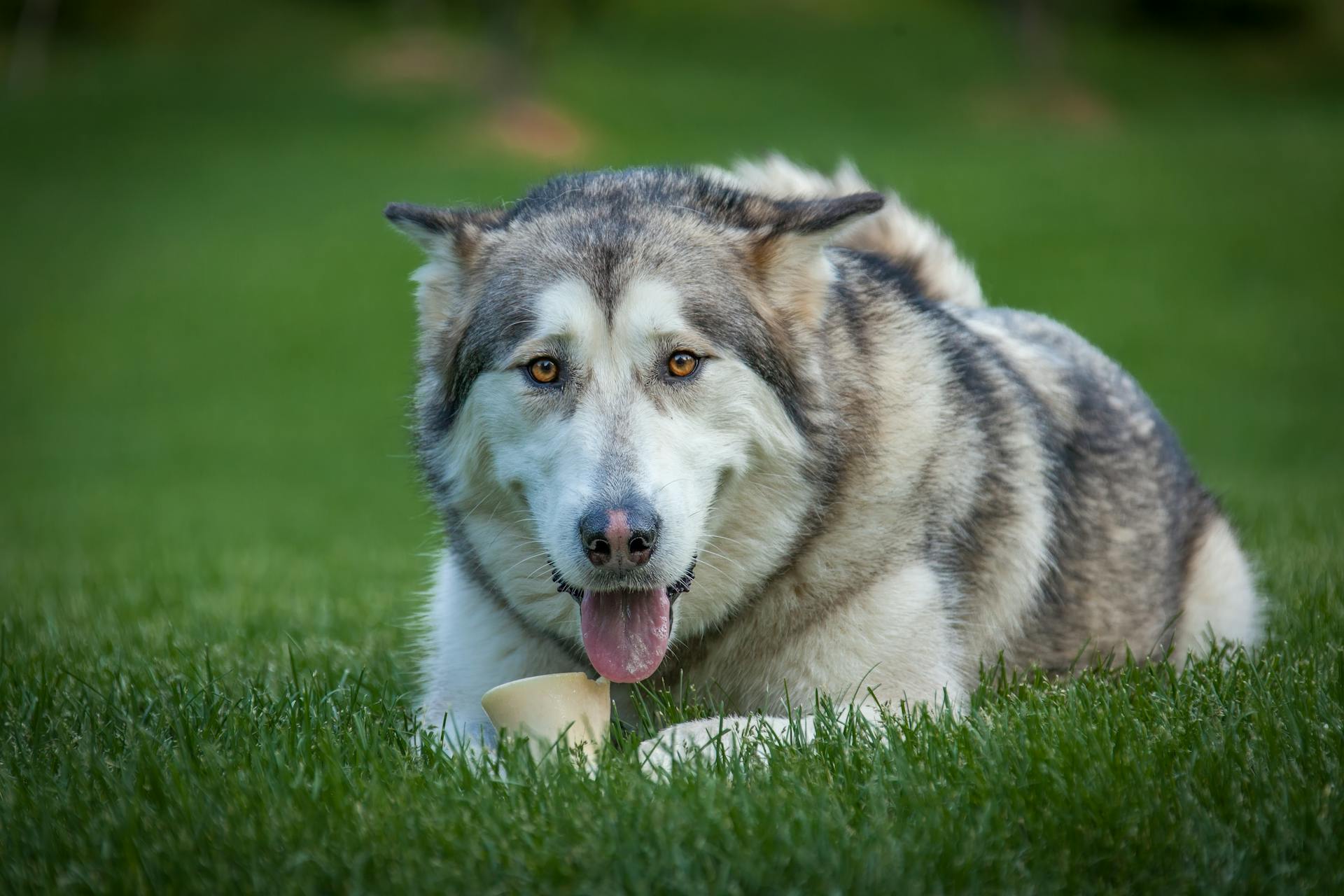
You can use toys and treats to capture your Alaskan Malamute's attention during training sessions. This breed is surprisingly easy to train, but they do get distracted easily and have a reputation for being stubborn. Quick 5-minute sessions with plenty of tasty treats as rewards can help motivate them.
Obedience training is super important for Alaskan Malamutes. They'll learn the basics like sit, stay, and come, plus how to walk nicely on a leash. Mals are big dogs that will run wild if you let them, so it's crucial to keep those training sessions short.
Training can also help minimize your Malamute's digging instincts, as they're born diggers. While no amount of training will completely erase this habit, exercise and mental stimulation can reduce their urge to dig. A tired Mal is a content Mal, after all!
Ownership and Adoption
If you're considering bringing an Alaskan Malamute into your life, it's essential to understand the options for adoption and ownership.
You can find reputable breeders through organizations like the Alaskan Malamute Club of America Breeder Listing or AKC Alaskan Malamute Breeders. These breeders typically charge between $1,000 and $2,500 for a puppy, with some pedigree puppies costing upwards of $6,000.
Adopting an adult dog can be just as rewarding, and rescue organizations like the Alaskan Malamute Assistance League or Chesapeake Area Alaskan Malamute Protection are great resources to explore.
Recommended read: Alaskan Malamute Breeder
Adopting/Buying a Dog
If you're considering adopting or buying an Alaskan Malamute, there are many resources available to help you find your new best friend.
You can start by contacting national and regional rescue organizations that specialize in rehoming Alaskan Malamutes. These groups often have puppies and adult dogs in need of loving owners.
Rescue organizations like the Alaskan Malamute Assistance League can be a great place to begin your search, as they work tirelessly to find forever homes for these wonderful dogs.
Take a look at this: Alaskan Malamute Rescue Dogs
If you're interested in buying an Alaskan Malamute from a reputable breeder, you can check out listings on websites such as the AKC Alaskan Malamute Breeders or the Alaskan Malamute Club of America Breeder Listing.
The cost of purchasing an Alaskan Malamute puppy can range from $1,000 to $2,500, but some breeders may charge upwards of $6,000 depending on the dog's pedigree.
Here are some reputable rescue groups and breeders to consider:
- Alaskan Malamute Assistance League
- Alaskan Malamute Club of America Breeder Listing
- AKC Alaskan Malamute Breeders
If you're unable to find a rescue group in your area, don't worry! You can contact the national breed club or a local breed club for assistance.
Dogs and Ownership
Alaskan Malamutes can thrive in families with children when consistent training and socialization are carried out. Firm boundaries must be set and sticking to them is essential for producing a well-mannered canine.
Children should be taught how to interact with dogs in a gentle and respectful way, especially since lively Alaskan Malamute puppies can inadvertently overpower young children below the age of five. Supervision during any interactions between dogs and young children is paramount to prevent accidental biting or pulling of ears or tails.
It's crucial to recognize that Alaskan Malamutes may instinctively chase small animals such as cats unless accustomed to them and trained otherwise. Introducing them properly to other household animals and closely monitoring their interactions, especially with outdoor cats and smaller animals, is vital.
You can exercise common sense when introducing your Alaskan Malamute to other animal friends in the household by closely supervising initial encounters. Leashes and pet gates can be very useful for preliminary introductions as they give you more control.
Frequently Asked Questions
What is a Malamute vs husky?
Huskies are bred for speed and agility, while Malamutes are built for endurance and heavy hauling. This fundamental difference shapes their unique personalities and working styles.
Is a Malamute a good family dog?
Yes, Malamutes can be good family pets for families with older children who are aware of their size. However, they may not be suitable for households with small kids due to their large stature.
Are Malamutes part of the wolf?
Malamutes are not part of the wolf species, but they do retain ancient genetic traits from historical interbreeding with wolves. This unique heritage is reflected in their high "wolfiness" scores.
Do Malamutes bark a lot?
No, Malamutes are not known for barking a lot; instead, they often howl.
Which is bigger, husky or Malamute?
Alaskan Malamutes are generally larger than Siberian Huskies. A Malamute typically weighs 75-85 pounds, while a Husky is usually between 40 and 60 pounds.
Featured Images: pexels.com
